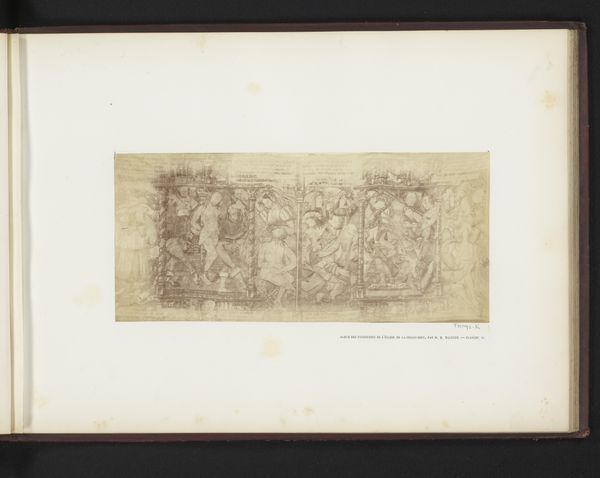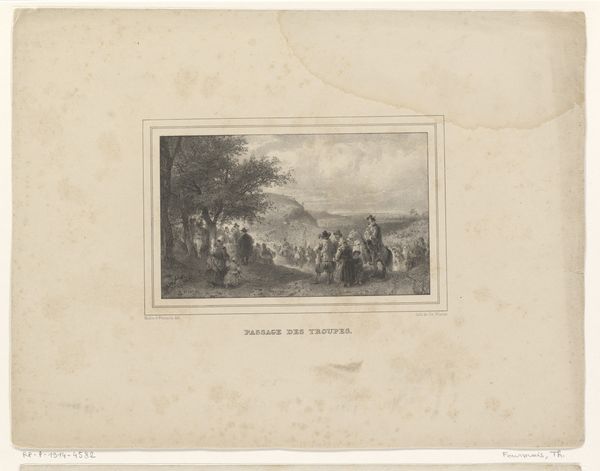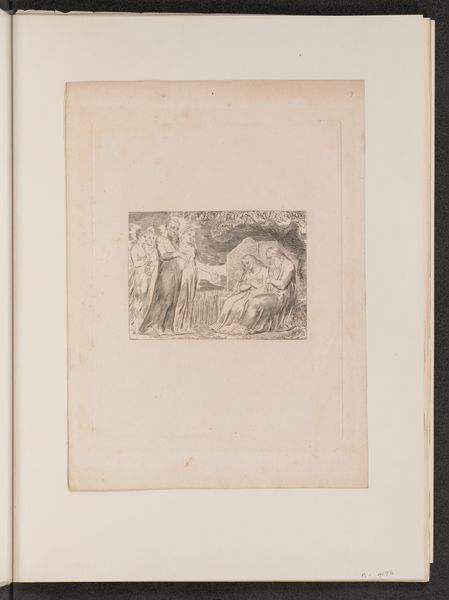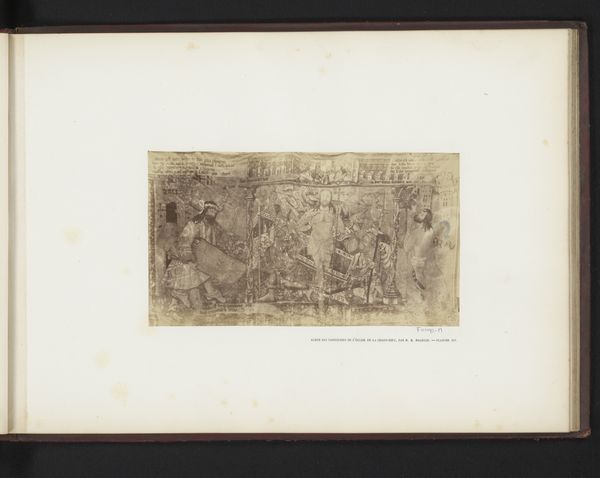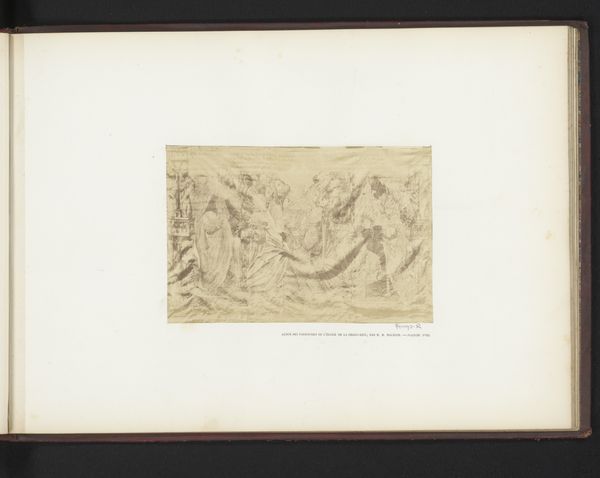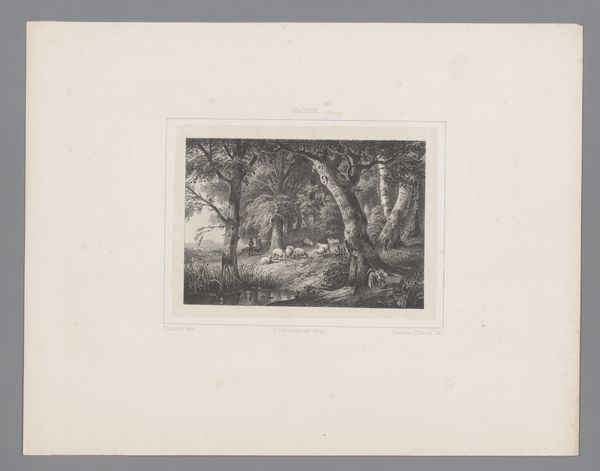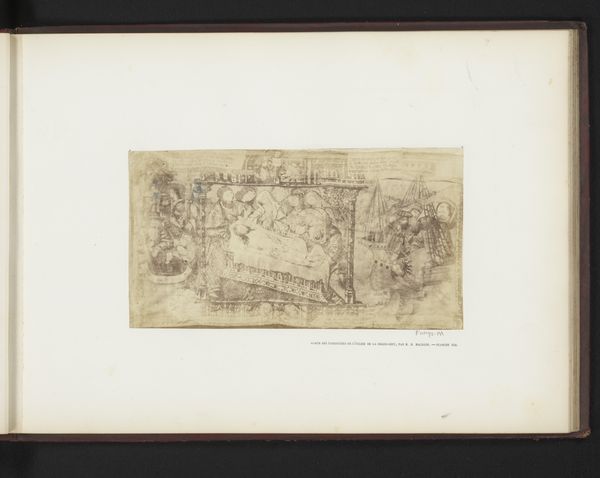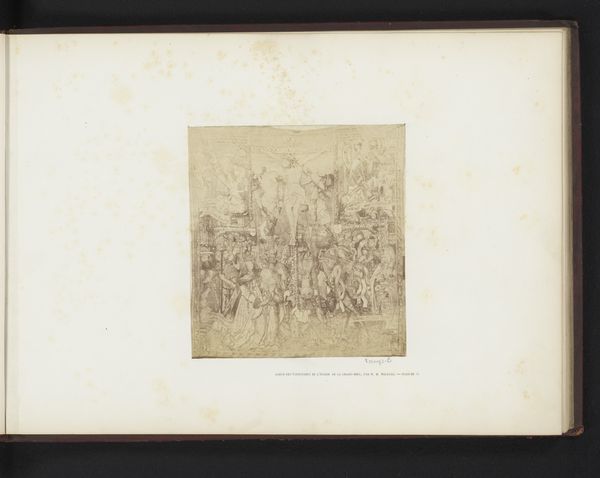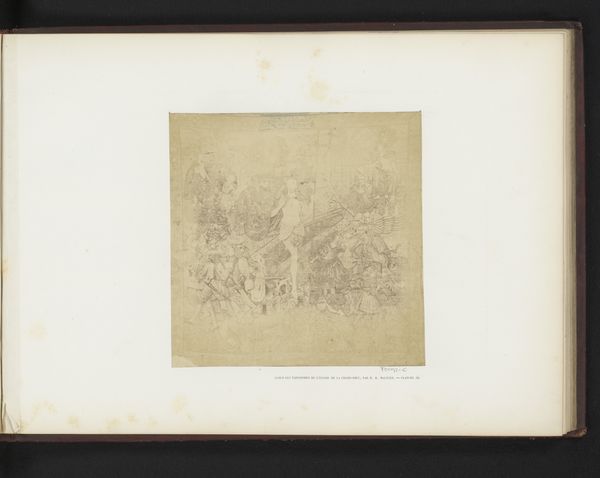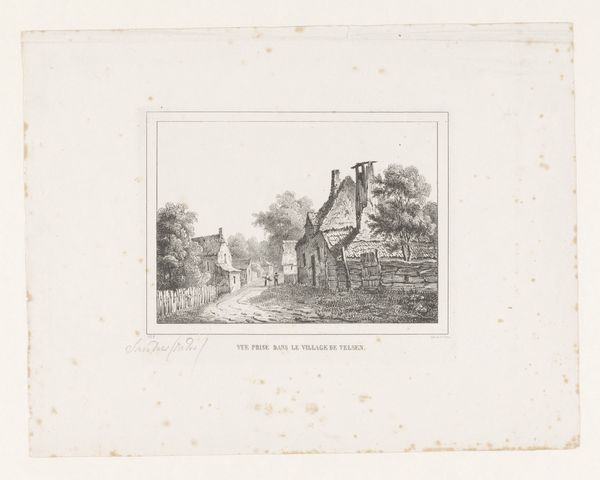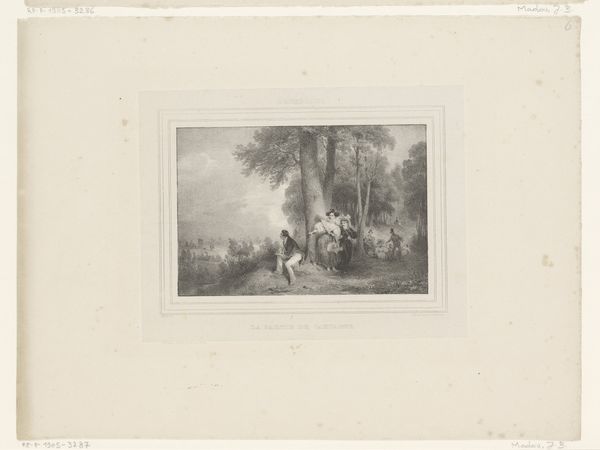
Tapijt met de neerdaling Heilige Geest en prefiguraties in een kerk te La Chaise-Dieu c. 1868 - 1873
0:00
0:00
print, photography, collotype, albumen-print
#
medieval
#
narrative-art
# print
#
photography
#
collotype
#
history-painting
#
albumen-print
Dimensions: height 83 mm, width 154 mm
Copyright: Rijks Museum: Open Domain
Editor: Here we have Hippolyte Malègue's "Tapestry with the Descent of the Holy Spirit and prefigurations in a church at La Chaise-Dieu", made sometime between 1868 and 1873. It seems to be a photograph of some kind, maybe an albumen print or a collotype? I am struck by the almost documentary quality, despite its religious subject matter. What's your read on this, from your perspective? Curator: From my perspective, the key here lies in understanding this work as a photographic reproduction, almost certainly intended for mass consumption. It democratizes access to this medieval tapestry in a church far from the urban centers. The choice of albumen or collotype – processes involving specific chemical and labor-intensive methods – indicates the intention to render the tapestry visible to a wider audience through reproduction. Does knowing the medium change your initial interpretation? Editor: It does! The "mass consumption" aspect you mentioned adds a whole new layer. So, instead of focusing solely on the tapestry itself, we can also consider the socioeconomic impact of reproducing and distributing it? Curator: Precisely. Think about the conditions of production. Who was involved in creating this collotype or albumen print? What was the cost of these prints, and who could afford them? It reframes our understanding; instead of high art we have accessibility thanks to these processes. The focus shifts from purely aesthetic appreciation to the social life of this photographic reproduction. Editor: So it's less about the spiritual subject and more about the act of dissemination. Were these photos generally appreciated as a form of art during that time, or mainly seen as documentary? Curator: That is part of the key tension of the time. This image complicates the existing artistic hierarchies. Was photography seen as craft, a means of replication? How was this perceived relative to "high" art forms? Or were certain examples regarded for artistry of composition? Editor: I hadn't considered it that way before! Thinking about art in terms of production and access opens up a whole new perspective for me. Thank you for that. Curator: Indeed! Paying attention to the materials and modes of production can change how we understand art's historical purpose.
Comments
No comments
Be the first to comment and join the conversation on the ultimate creative platform.
